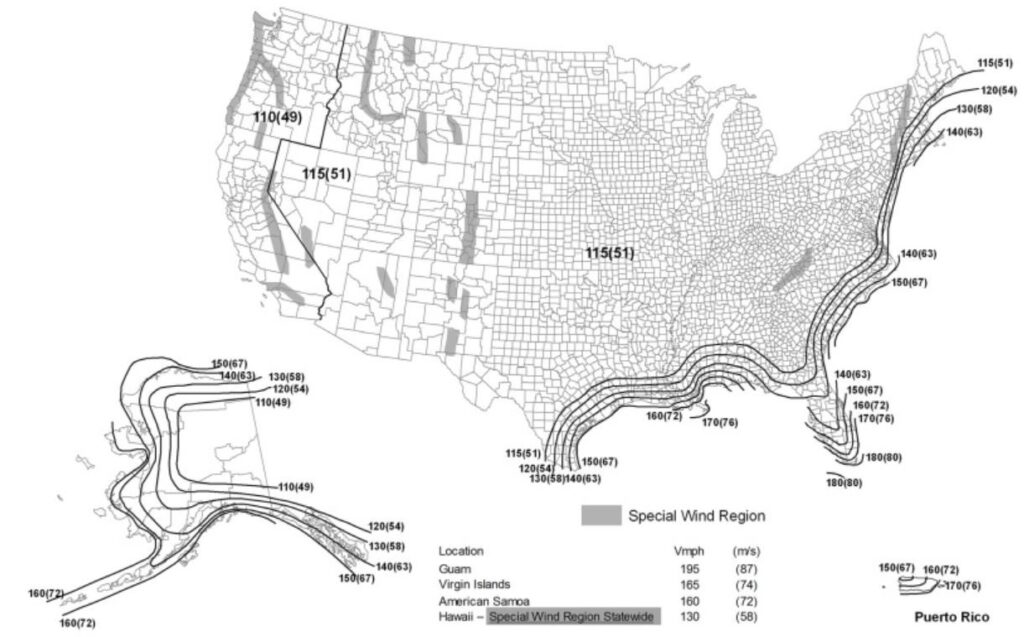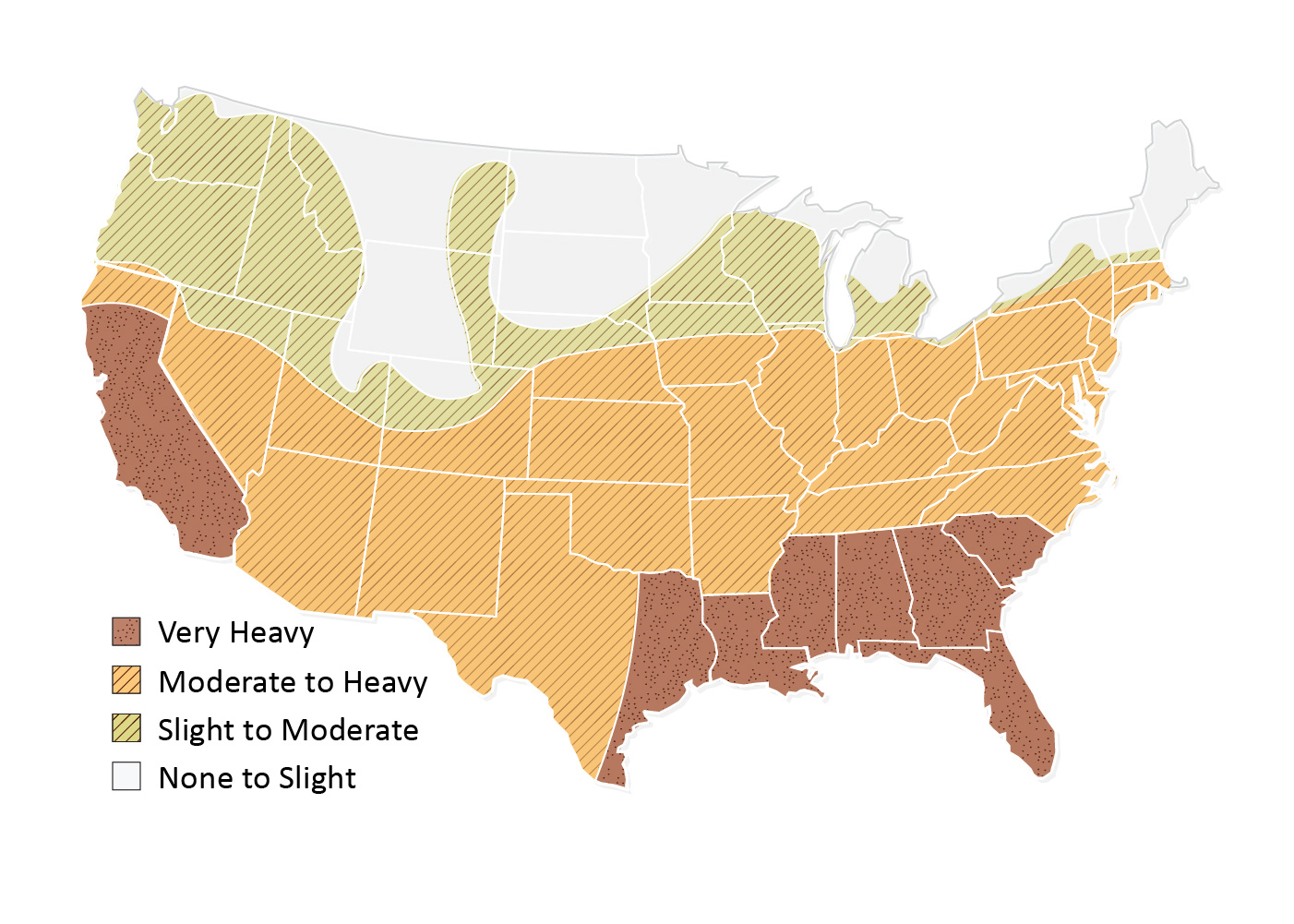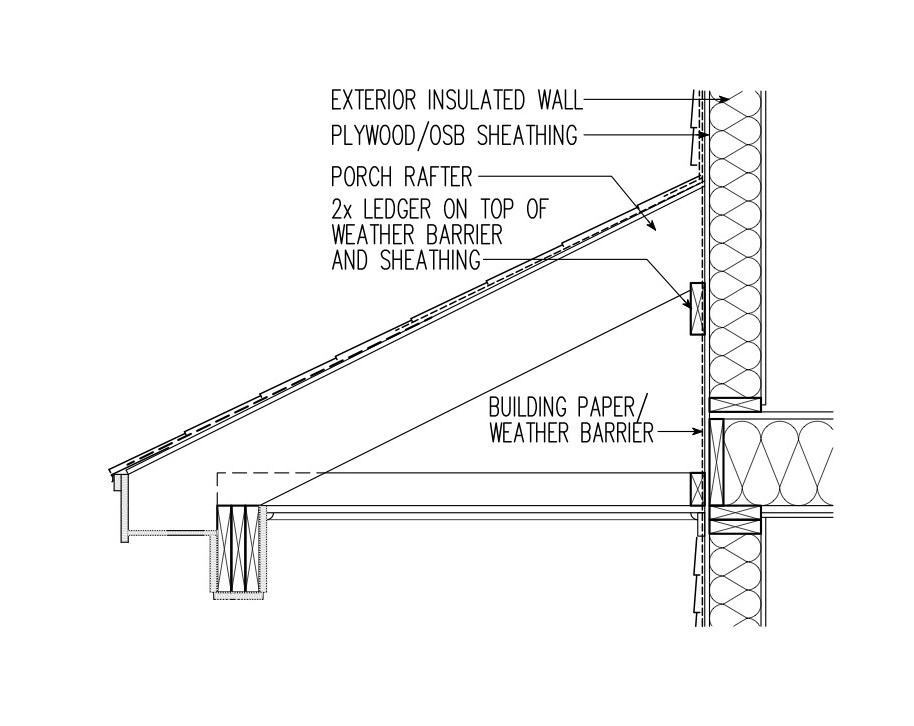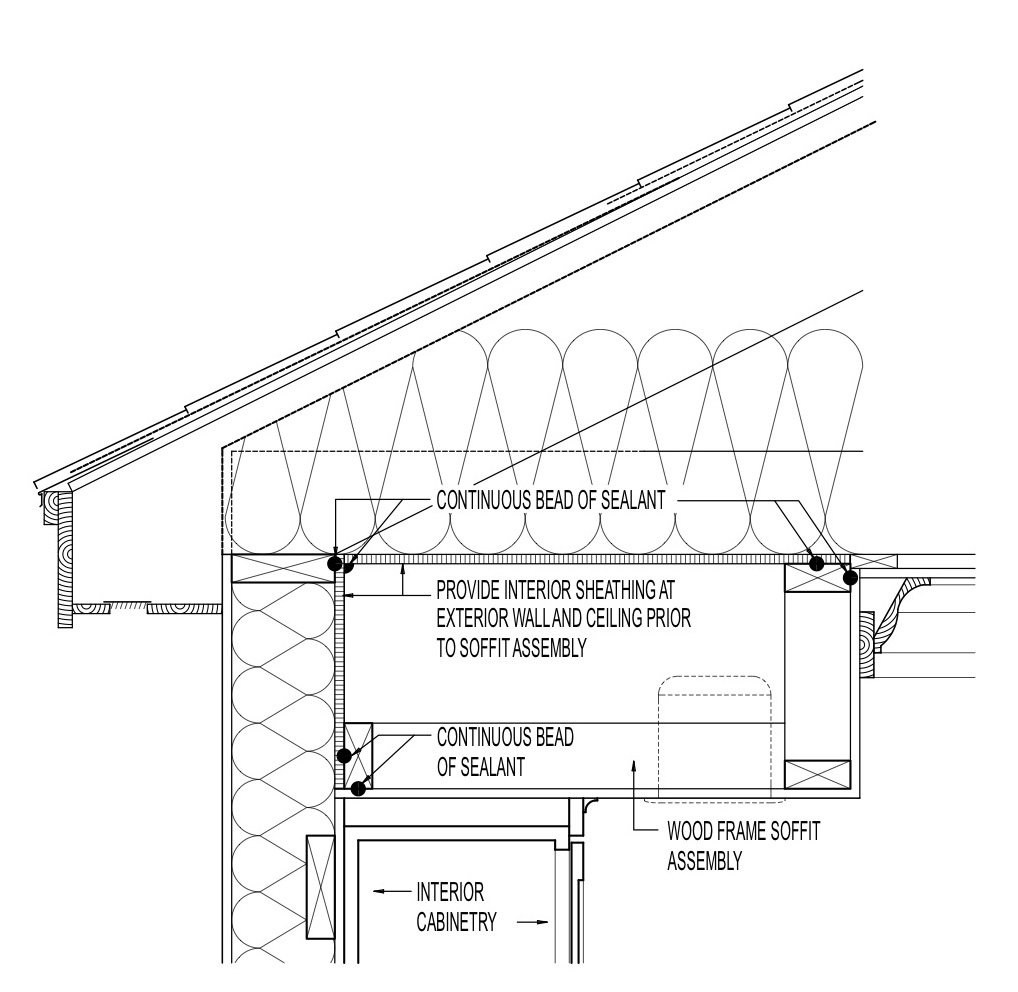Scope:
- Install pressure-rated garage doors to safeguard your home from high winds during hurricanes and storms.
- Determine if your home is in a hurricane-prone or high-wind area.
- Select garage doors rated for the wind pressures specific to your location and exposure category.
- If your garage door has glazing, ensure it’s pressure-rated and impact-rated or protected with an approved impact-resistant system.
- Install garage doors following manufacturer’s instructions and local building codes.
- Periodically inspect exterior doors and hardware to maintain functionality.
Description of Garage Door Failures
- Garage doors, typically large and unreinforced openings, are susceptible to damage during high-wind events, potentially leading to pressurization of the building. These failures include:
- Outward-acting negative pressure (suction) failures, where doors buckle and pull outward.
- Inward-acting positive pressure failures, causing doors to buckle or push inward.
- Hardware failures that affect the lateral support and operation of the garage door.
- Such failures can allow substantial water and wind infiltration into the building. While water entry is less concerning due to water-resistant construction materials, the real issue is the increase in internal pressure when garage doors fail. This breach in the building envelope can lead to strong winds entering the building, pushing out windows, walls, doors, and roofs, ultimately causing building failure.
- To enhance storm resistance, the Insurance Institute for Business and Home Safety® (IBHS) FORTIFIED Home Hurricane and High Wind Standards, specifically for the Silver designation, mandate that garage doors be pressure-rated according to site-specific design wind speeds and exposure categories.
- FEMA’s Wind Retrofit Guide for Residential Buildings (FEMA P-804, 2010) also emphasizes the importance of protecting garage doors from wind pressure as part of intermediate mitigation package retrofits.
- Both IBHS and FEMA offer two methods for designing or retrofitting garage doors to resist design wind pressures:
- Install a garage door certified to withstand the design wind pressure for the location.
- Protect the existing garage door by installing an impact-resistant covering certified to withstand the design wind pressure for the location.
- Garage doors with glazing exceeding 1 square foot (for one-car garages) or 1.8 square feet (for two-car garages) should be certified to resist both windborne debris impacts and the design wind pressure for the location. This can be achieved through either of the two retrofit options mentioned above.
- Garage doors should meet the design wind speed requirements for their area or be reinforced or replaced with a new door that is wind- and windborne-debris-resistant. After-market reinforcement kits may also be available, providing vertical and horizontal reinforcement. If a reinforcement kit requires adjusting spring tension, it should be done by a professional installer.
- The International Residential Code (IRC) mandates that exterior building components and their attachments must resist design wind pressures, especially in high-wind regions. Coastal high-wind areas and Hurricane-Prone Regions, as defined by the IRC, have more stringent attachment requirements due to the potential for greater wind speeds.
- The IRC also requires the protection of exterior glazed openings in garage doors from windborne debris in windborne debris regions. Garage doors should be tested in accordance with ASTM E 330 or ANSI/DASMA 108 and meet the acceptance criteria of ANSI/DASMA 108, as per IRC Section R609.4.
- While some manufacturers provide wind speed and exposure ratings on their products, many garage door labels do not include such information. ANSI/DASMA 108, though not mandatory on product labels, requires recording positive and negative pressure used in testing on the ANSI/DASMA 108 Test Report Form. If the label lacks pressure ratings, refer to the Test Report Form to verify the suitability of the garage door for your location.
How to Select & Install Pressure Rated Garage Doors
- Ensure garage doors meet the appropriate design pressure based on your location’s wind conditions.
- For homes in areas with buildings or trees nearby (30-ft mean roof height):
- Minimum Single Car Garage Door Pressures: +20 psf, -22 psf
- Minimum Double Car Garage Door Pressures: +19 psf, -21 psf
- For homes in exposed settings or near open areas (30-ft mean roof height):
- Minimum Single Car Garage Door Pressures: +27 psf, -30 psf
- Minimum Double Car Garage Door Pressures: +26 psf, -28 psf
- For homes in areas with buildings or trees nearby (30-ft mean roof height):
- Select garage doors tested and approved in accordance with IRC design pressure test standards like ANSI/DASMA 108 or ASTM E330 (products tested to 1.5 times design pressure).
- In Florida’s High Velocity Hurricane Zone, garage doors must be tested and labeled per TAS 202 (Criteria for Testing Impact and Non-Impact Resistant Building Envelop Components using Static Air Pressure).
- When impact protection is required, choose impact-resistant garage doors or provide impact-resistant protection for glazing. Impact-resistant doors should be rated and labeled according to standards like ASTM E1996, ASTM E1886, or AAMA 506.
- Follow manufacturer instructions meticulously for the correct installation of garage doors.
- Consider IBHS FORTIFIED Home™ standards for added resilience:
- Garage doors must meet design pressures associated with Vasd= 110 mph (ASCE 7-05) or Vult= 140 mph (ASCE 7-10) design wind speeds.
- For garage doors without glazed openings (windows):
- Provide a garage door assembly meeting the design wind pressure for the site.
- Or protect the garage door with an impact-rated shutter/screen product that meets the design wind pressure for the site.
- For garage doors with glazed openings (windows):
- Ensure the door and windows, as an assembly, are rated for the design pressure and impact.
- Alternatively, protect the garage door with an impact-rated shutter/screen product meeting the design wind pressure for the site.
Climate

- Garage doors in hurricane and high-wind-prone regions are susceptible to damage during storms, making proper installation crucial.
Compliance with Codes and Standards
2009, 2012, 2015, 2018, and 2021 International Residential Code (IRC):
- Section R322 Flood-Resistant Construction: This section addresses the determination of the design flood elevation, protection of electrical, HVAC, and plumbing equipment, flood-resistant materials, and flood mitigation requirements for crawlspaces.
- R322.2.2 Enclosed area below required elevation: Specifies that crawlspaces must not be used as occupied areas and necessitates openings to allow floodwater to enter and exit the crawlspace.
- R322.3.3 Foundations: This section indicates that crawlspace foundations may not be used in coastal high-hazard areas and Coastal A Zones. However, the 2009 and 2012 IRC versions do not include Coastal A Zone in this section.
2009-2021 IECC and IRC Insulation Requirements Table: - This table outlines the minimum insulation requirements for ceilings, walls, floors, and foundations in new homes. These requirements are listed in the 2009, 2012, 2015, 2018, and 2021 IECC and IRC.
- Retrofit: 2009, 2012, 2015, and 2018 IECC:
- Section R501.1.1 in 2018 IRC: For additions, alterations, renovations, or repairs, it is specified that they must conform to the provisions of this code without necessitating compliance of the unaltered portions of the existing building with this code.
Remember: Protecting your garage doors is essential to prevent wind and water intrusion during storms. Ensure compliance with local codes and standards for added safety.
For immediate service or consultation, you may contact us at Allied Emergency Services, INC.
Contact Information:
- Phone: 1-800-792-0212
- Email: Info@AlliedEmergencyServices.com
- Location: Serving Illinois, Wisconsin, and Indiana with a focus on the greater Chicago area.
If you require immediate assistance or have specific questions, our human support is readily available to help you.
Disclaimer: This article is intended for informational purposes only. For professional advice, consult experts in the field.










